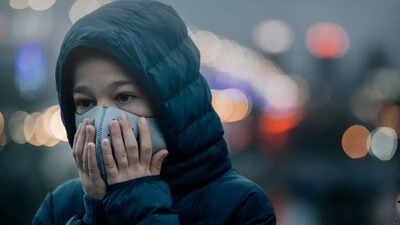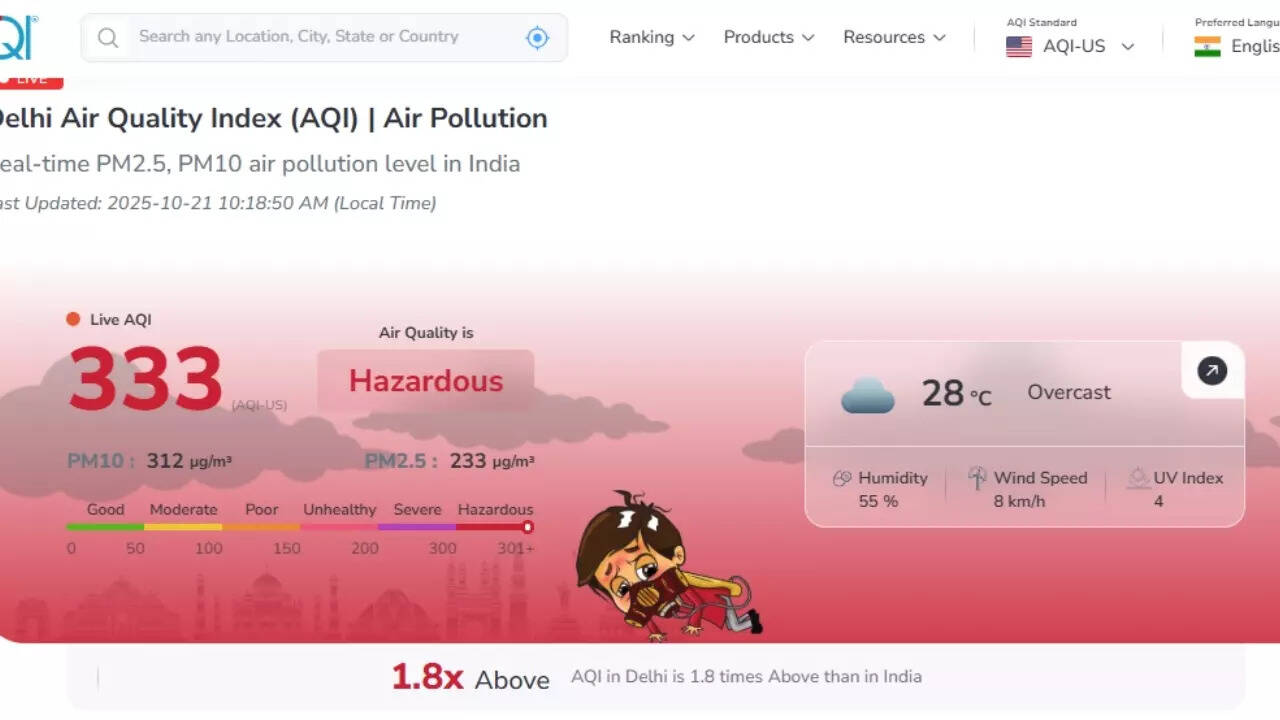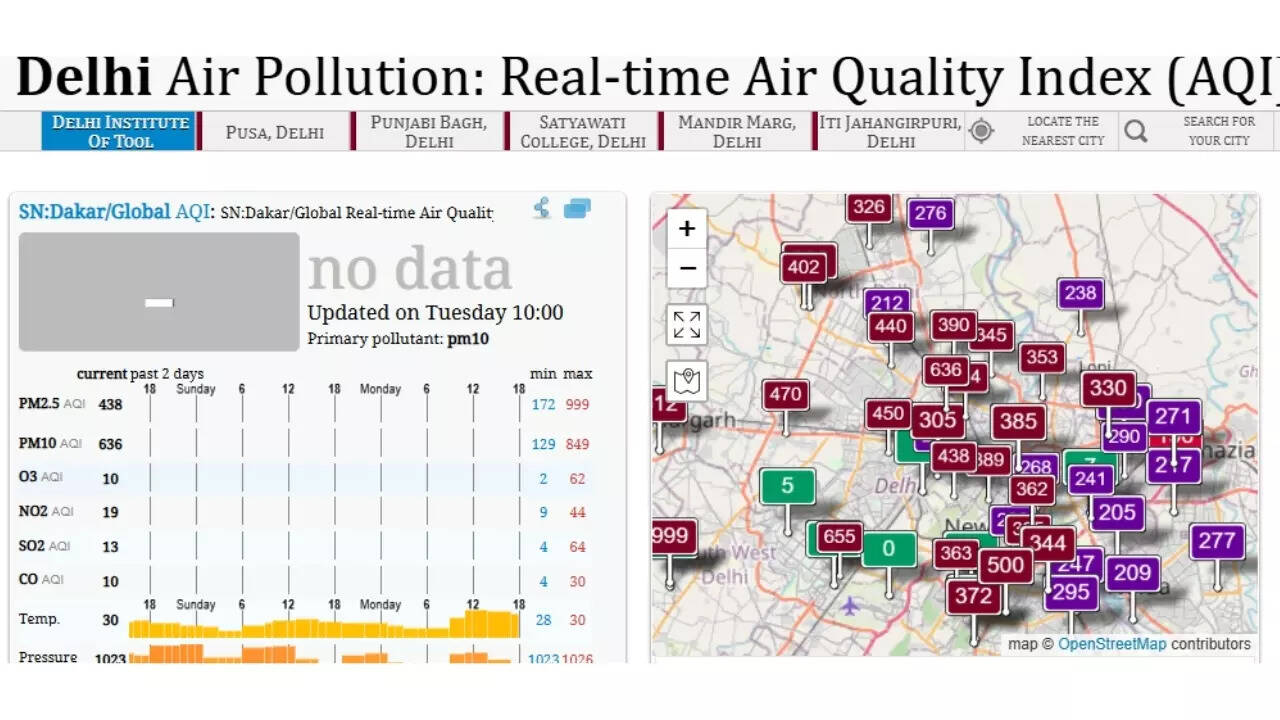ARTICLE AD BOX

Delhi woke up on Tuesday shrouded in a dense haze–the after-effects of Diwali firecrackers. Despite Supreme Court-mandated restrictions on firecracker usage, widespread bursting of fireworks pushed the Air Quality Index (AQI) into the ‘severe’ category, raising serious health concerns for residents across the national capital and surrounding satellite towns.The city-wide AQI averaged 451 at 7 am, nearly 1.8 times higher than the national safe limit, highlighting the stark contrast between regulatory expectations and actual on-ground behavior. Satellite cities including Noida and Gurgaon reported AQI readings of 407 and 402 respectively, indicating that the pollution plume had spread well beyond Delhi’s boundaries.For context, last year, Delhi had recorded post-Diwali AQI levels in the ‘very poor’ category, averaging 359.
This year’s figures mark a sharp increase, placing public health at heightened risk. Several monitoring stations across the city recorded alarmingly high readings. Ashok Vihar recorded an AQI of 445, Anand Vihar at 440, Wazirpur at 435, and Dwarka at 422, all firmly in the ‘severe’ zone.

Here’s an easy way to understand the AQI levels. The AQI scale categorises air quality as follows:
- 0–50: Good
- 51–100: Satisfactory
- 101–200: Moderate
- 201–300: Poor
- 301–400: Very Poor
- 401–500: Severe
With Delhi’s AQI reaching the upper end of the spectrum, experts have warned that vulnerable populations, including children, the elderly, and individuals with respiratory conditions, are at an extremely high risk of health complications, ranging from acute respiratory distress to cardiovascular issues.
Anticipating seasonal pollution, the Commission for Air Quality Management (CAQM) had earlier implemented Stage II of the Graded Response Action Plan (GRAP), aimed at reducing air pollution through a combination of preventive and mitigative measures.The India Meteorological Department (IMD) has indicated that the city’s weather conditions are unlikely to provide immediate relief. The absence of strong winds and temperature inversions has caused pollutants to remain trapped near the surface, creating persistent smoggy conditions across the city.

Precautions travellers and residents should takeResidents and travellers are advised to limit outdoor activity, especially for children and older adults. Use air purifiers and masks when venturing outside. Airborne particulate matter, particularly PM2.5, poses serious health risks to all. Residents and travellers are being advised to use public transport where possible, and keep windows closed during the morning and evening hours when smog is densest.The aftermath of Diwali 2025 has once again underscored the persistent challenge Delhi faces each winter: balancing cultural celebrations with the urgent need to protect public health and the environment. Despite Supreme Court regulations, green cracker allowances, and government mitigation measures, the city’s air quality has deteriorated to dangerous levels, leaving residents to contend with severe smog and heightened health risks.Post Diwali, the real-time data from AQI.in revealed India’s top 10 most polluted cities. As per real-time data, several cities across India are currently grappling with extremely poor air quality, with the top 10 cities registering AQI levels in the Hazardous category (301+). Places like Daryapur, Ballabh, Dharuhera, and Sonipat are in top 4 (in that order), while New Delhi with 308+ finds itself in the ninth position.
The majority of the most polluted cities are concentrated in Haryana, Punjab, and Uttar Pradesh.Fine particulate matter (PM2.5) is the primary pollutant driving these hazardous AQI readings. In cities like Daryapur and Ballabh, PM2.5 concentrations are exceeding WHO recommended limits by over 100 times, posing immediate and long-term health risks. Prolonged exposure can aggravate asthma, bronchitis, heart disease, and increase the risk of respiratory infections.Visitors planning trips to northern India or Delhi during this period should exercise caution. Outdoor sightseeing, open-air markets, heritage walks, and morning tours may pose health risks. Travelers are advised to monitor daily AQI updates, wear N95 or PM2.5-rated masks, limit outdoor activity during peak pollution hours, and opt for indoor cultural experiences, museums, or shopping centers until air quality improves.

 8 hours ago
6
8 hours ago
6









 English (US) ·
English (US) ·